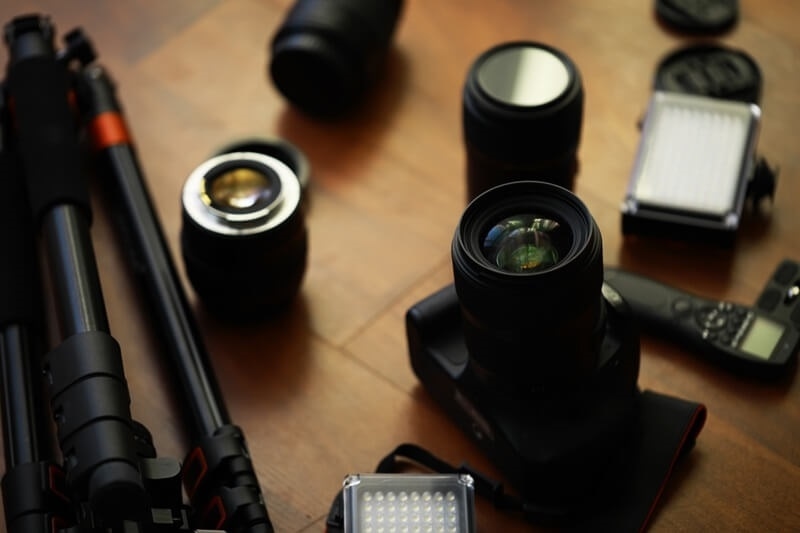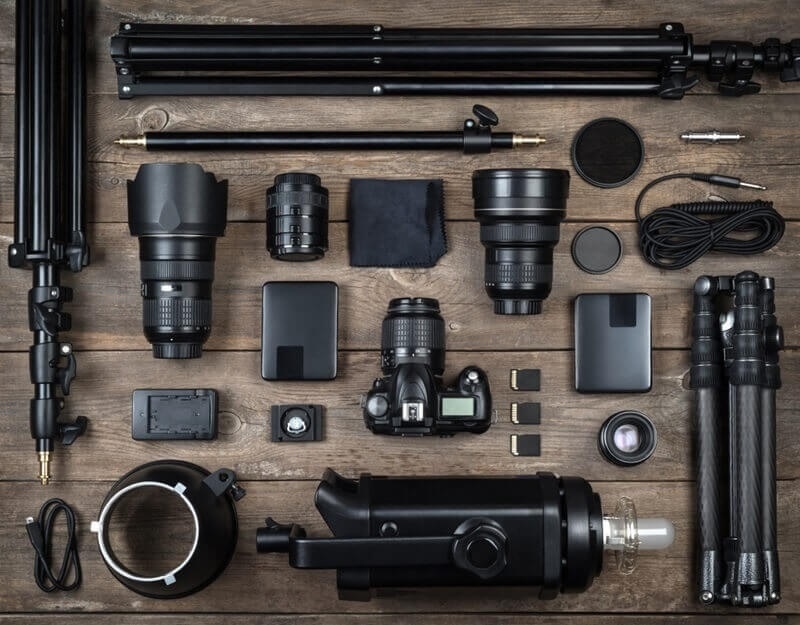
Photography may be one of the most rewarding hobbies or professions, but it may also be terribly costly. Brand new lenses and cameras cost thousands of dollars, which can be tough for new and frugal enthusiasts to get the kit they really want. That's why photographers buy so much in the second-hand market. With some strategic thinking, you can save a lot of money and still come out with good, quality gear.
The problem, however, is that there are risks involved with the second-hand gear market. The scams, busted gear, and misrepresented products are all too common realities. Due to that, you need to be aware of where to shop, what to inspect, and how to protect yourself when purchasing. This article gives practical buying used camera gear tips, uncovers safe places to buy used cameras, and offers a quality used camera checklist so you can make informed choices.

Before it is even taught how to do it, it is worth it to understand why so many US photographers are opting to use secondhand photography gear.
Cost Savings: Secondhand gear costs 20% to 60% less than fresh. A $1,200 in-store lens might be bought used for $700, most times with minimal wear.
Access to More Sophisticated Equipment: By purchasing secondhand, you can now afford the gear that otherwise would be out of reach. This is especially appealing for full-frame bodies and pro glass.
Depreciation is in Your Favor: New cameras drop in value fast over the first two years. When you purchase used, you've got someone else absorbing that initial depreciation hit.
Tested and Proven Equipment: Most utilized cameras are already tested and have established results by past photographers. In case the model has been confirmed as reliable, you are guaranteed performance.
When done well, buying used equipment is one of the best photography budget equipment hacks for photographers, regardless of their level.
One of the biggest concerns when purchasing second-hand is making sure that you buy from trusted sources. The safest method is to utilize well-established platforms and stores. Here are some safe places to buy used cameras:
Stores like B&H Photo, Adorama, and KEH sell used photography gear. They condition-rate gear by condition, provide thorough descriptions, and provide a warranty in most instances. This makes them one of the safest options.
The majority of independent camera stores across the US buy and sell second-hand equipment. Local buying allows you to see the gear in person before committing. It also allows you to get to know experienced personnel who can guide you through the process.
Places like eBay, Facebook Marketplace, and Craigslist can offer great deals, but are not as safe. If you do this, meet in public, test the equipment thoroughly, and make secure payments.
Internet forums such as Fred Miranda or the photography bazaar at Reddit have buy/sell sections where members trade equipment. Yes, these are not perfect, but quite often you can research a seller's history and reputation beforehand.
Knowing where to begin is half the battle. Pairing these resources with the discerning eye of a workup process ensures that you will avoid expense-blanket errors.
If you are new to photography, the secondhand buying experience can be overwhelming. This beginner's guide to used equipment simplifies it into steps that are manageable:
Decide What You Need: Newbies get daunted with too many options available. Start off by writing down what is most critical to you—a quality camera body, an all-around zoom lens, or a fast prime lens for portraits.
Set a Budget: Establish your best price before you start shopping. This avoids you getting upsold or sold something you don't require.
Research Market Prices: Look at a few different sources to view the going rate of equipment that you are looking for. This will help you keep an eye out for the too-good-to-be-true prices and the overpriced listings.
Check Compatibility: Make sure lenses, mounts, and accessories are compatible with your future or existing system. For example, Canon EF lenses do not natively work with Canon RF mirrorless bodies without an adapter.
Adhere to Reputable Sellers: Although the temptation to pursue the lowest price is great, it is better to pay a premium on trusted sites than get scammed.
By doing these simple steps, one gets an excellent foundation to work from for beginners venturing into the marketplace of secondhand photo gear.
Checking a camera or lens visually before you purchase is crucial. A quality used camera checklist helps you evaluate whether or not the gear is an investment worth making.
For camera bodies,
Shutter Count: Check how many times the shutter has been activated. Most DSLR shutters have a lifespan of 100,000–300,000 clicks.
Sensor Condition: Inspect for dust, scratches, or dead pixels by shooting test images of a flat surface.
Buttons and Dials: Test all controls operate freely with no sticking or lag.
Ports and Battery: Inspect USB, HDMI, and memory card ports for damage. Test with a healthy battery.
Screen and Viewfinder: Inspect for scratches, dead pixels, or color fade.
For lenses,
Glass Condition: Inspect ends for scratches, haze, or fungus.
Aperture Blades: Ensure smooth in/out movement.
Autofocus: Test for rapid and accurate focusing.
Zoom and Focus Rings: Turn to ensure smooth, grinding-free rotation.
Mount: Ensure no damage or excessive wear.
Running through this checklist, or asking the seller to verify, greatly reduces your risk of receiving faulty equipment.
After accumulating experience over the years, most photographers agree on some buying used camera gear tips that minimize risks:
Always Ask for Proof of Purchase: A legitimate seller will often have the original receipt, which is proof of ownership and guarantees that the item is not stolen.
Request Detailed Photos: If you buy online, ask for close-up photos of the lens elements, the camera sensor, and the wear marks. The seller who is unwilling to let you see these is likely hiding something.
Avoid Cash Payments: Use protected payment methods like PayPal Goods & Services, which offers buyer protection. Cash gives you no recourse if things don't work out in the purchase.
Test Before You Buy: If face-to-face meeting, bring a memory card and take sample shots under your own settings. For lenses, take sample shots with apertures and focal lengths.
Be Wary of Unrealistic Prices: If the offer sounds too good to be true, it probably is. Check prices on various platforms to ascertain fairness.
By applying these used camera equipment buying tips, not only will you save yourself some cash, but also ensure peace of mind in the purchase of valuable gear.
Buying used equipment does not have to be dangerous. Proper information, thorough examination, and knowledge of the marketplace will allow you to pick up excellent equipment for cents on the dollar. Following safe used camera sources, employing a solid used camera checklist, and applying successful buying used camera equipment tips will protect you from fraud.
For beginners, the beginner's guide to second-hand gear provides a clear map of how to start small and grow gradually with confidence. For those with shallow pockets, the tips listed under budget photo gear hacks ensure that you can still pursue your passion without having to dent your pocket.
In photography, the finest instrument you will ever possess is your vision and your imagination. The gear merely makes it accessible. With savvy shopping, you can obtain the equipment you need—without spending your life's savings or landing in traps that trap so many beginner consumers.
This content was created by AI